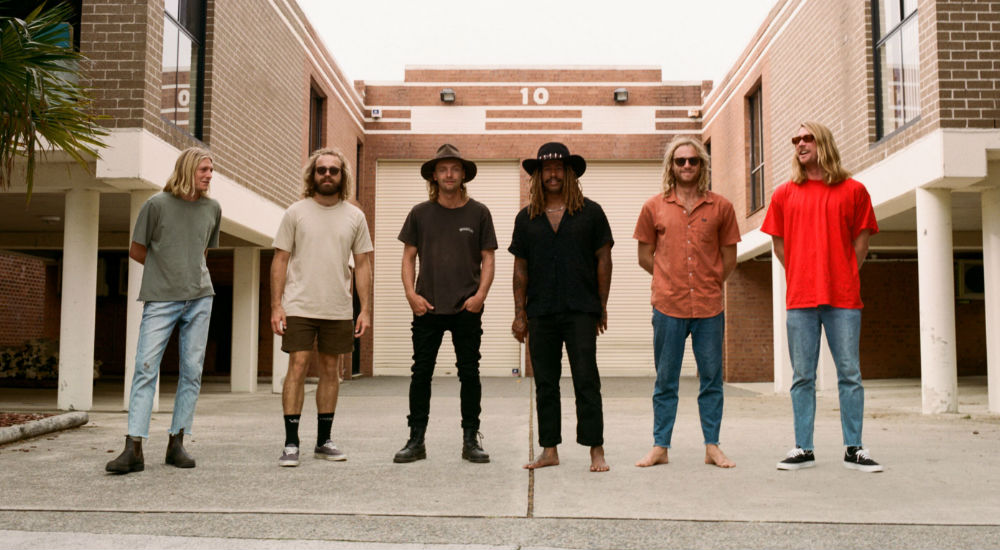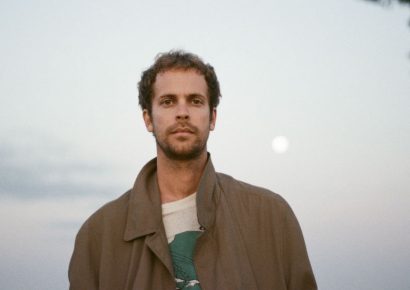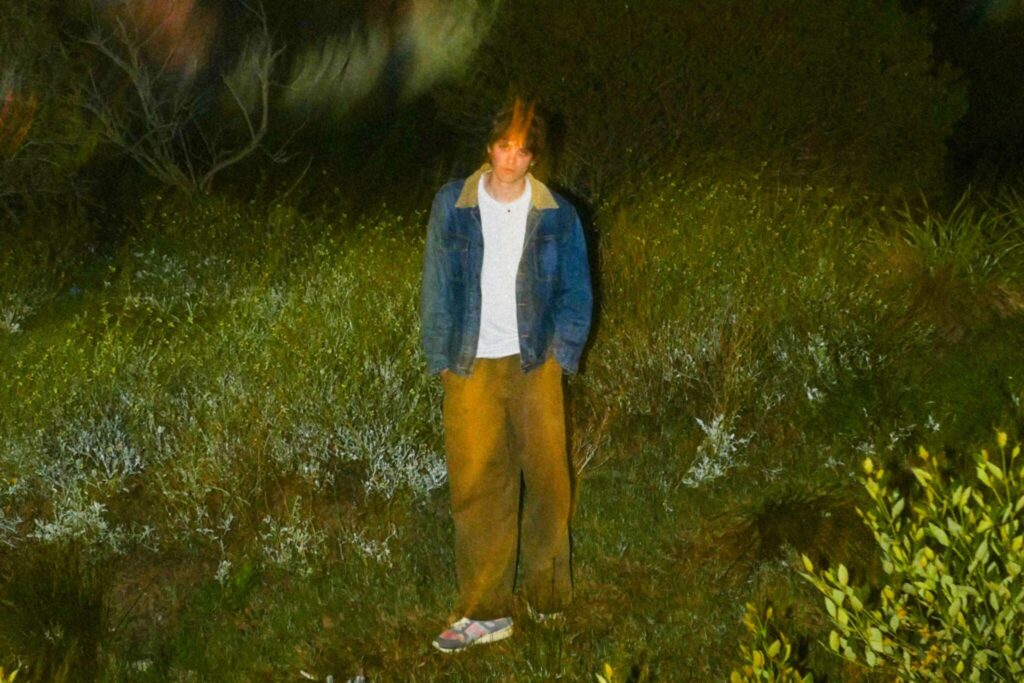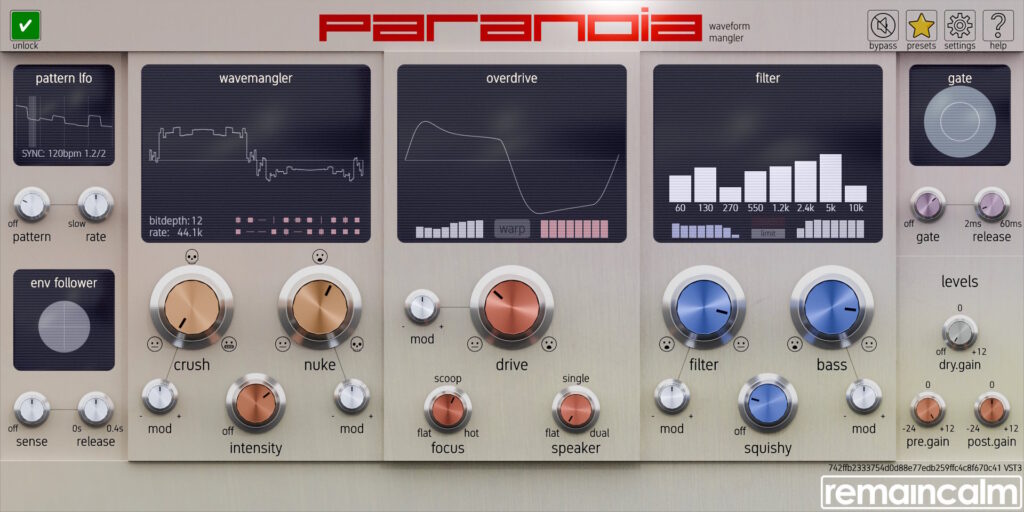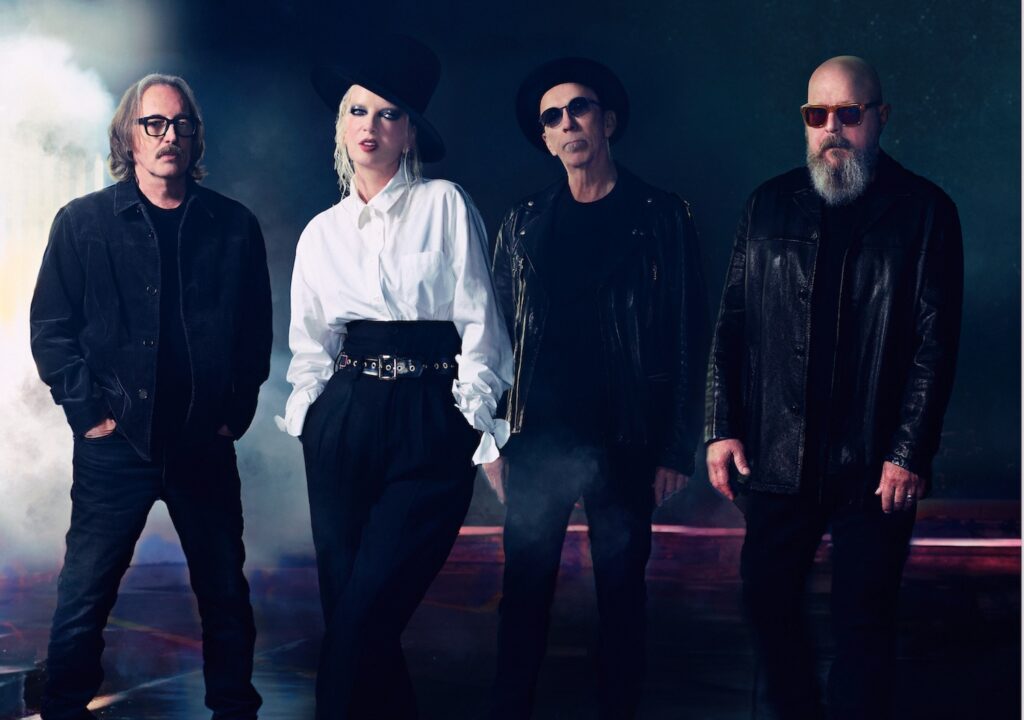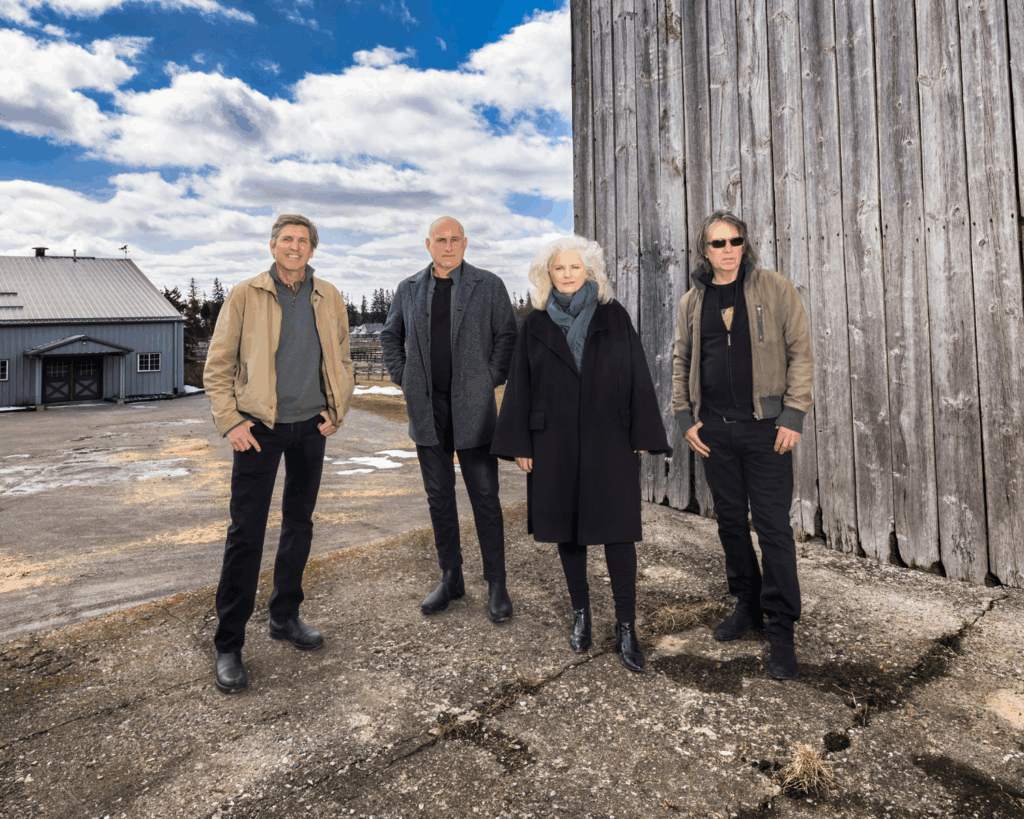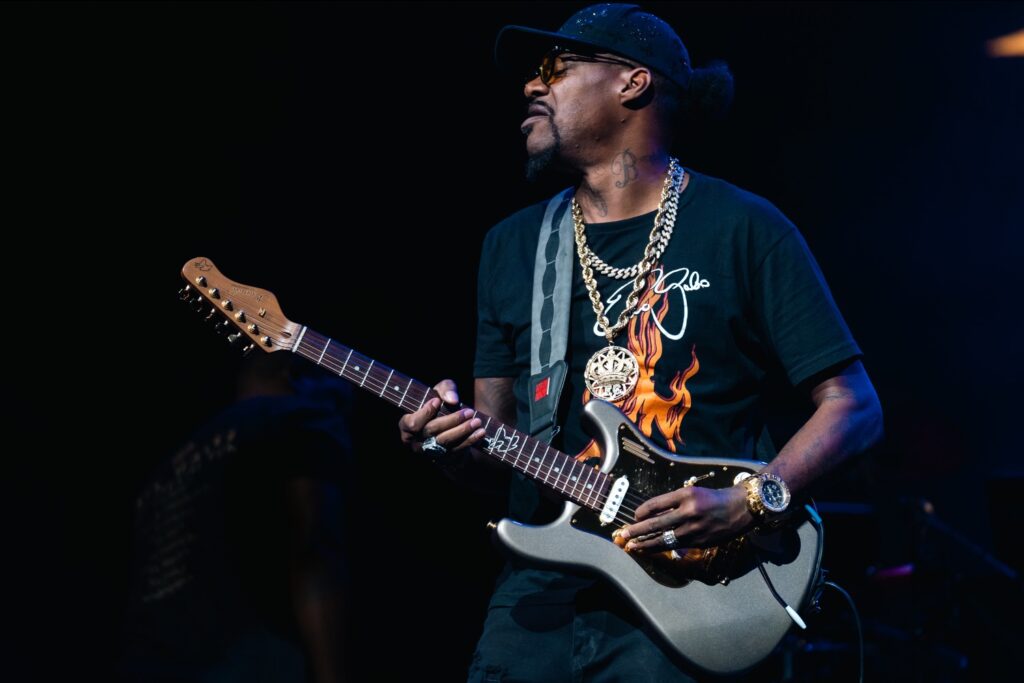Fusing their trademark indie-rock sound with hints of psychedelia, Western and ’70s radio rock, Lonely Diamond is undeniably Ocean Alley’s most dynamic release to date: it’s ambitious and creatively engaging yet jam-packed with melodic hooks and sunny grooves, with the band never straying too far away from what made them great in the first place.
Arriving independently this Friday, it’s the end result of an intensive year of writing and recording, with the final product going above and beyond to show what the band is capable of. Sessions for the album kicked off right after the group took out the Hottest 100, with Ocean Alley recamping to Byron Bay’s Rockinghorse Studios to start tracking down ideas before recording the album in one fell swoop with go-to producer and engineer Callum Howell at The Grove on the NSW Central Coast.
With the release of the record, we caught up with Ocean Alley and Callum Howell, the man responsible for all the action behind the boards, to go behind the scenes into the writing and recording process of Lonely Diamond. Throughout the chat, we get an insight into Ocean Alley’s own compositonal and recording process, while Howell shares the specific instruments, gear and technqiues used to capture Ocean Alley’s performances and turn them into the album they’ll be releasing into the world this week.
You guys started recording Lonely Diamond just days after taking out the Hottest 100 with ‘Confidence’. What was going on in that point go time for you? Did you feel a crazy amount of pressure to follow up the success you encountered in 2018?
Ocean Alley: “We were touring so much at that point, and it didn’t really slow down for us until the beginning of this year, so I guess we were spending a lot of time together but not really in any kind of creative space. Time spent in airports and driving in vans isn’t overly productive for album writing, but we managed to make it work in between it all. When we got time off the road we were each working on our own ideas to bring to the table, and those few precious moments we got in the living room between tour we managed to flesh most of it out.
“We knew we had to back Chiaroscuro up, so there was some form of pressure, but we were pretty sure we had it in us. It’s just that feeling of the unknown and finding a good starting point that can sometimes be the hardest part, so we pushed ourselves to start writing new music pretty much as soon as we released Chiaroscuro.”
From the first episode of your Constructing The Diamond series, you guys mention that you don’t usually hit the studio until there’s at least a kernel of an idea to work on. That being said, how many songs or sections were written out of just jamming together in the studio?
Callum Howell: “We had a lot more time dedicated to writing and demoing than we ever have before. We were working on the material together from the very beginning, refining ideas and working on the arrangements. When we went into the studio to record Lonely Diamond the whole thing was written aside from ‘Dahlia’ and ‘Luna’ and we tracked it all in one block, which has a nicer flow to it in my opinion.
“For Lost Tropics, I was listening to demos on the way to the studio. We smashed the whole thing out in two weeks and that was it. Chiaroscuro was written and recorded in three song blocks over the course of about a year. A lot of Chiaroscuro was written in the studio, half the time we’d be working out the part when they sat down to do a take.”
OA: “Yeah, usually we took songs up there that we thought we’d finished writing, but once we started listening to the songs next to each other they didn’t meld the way we wanted.
“‘Dahlia’ and ‘Luna’ bookend the record and were conceived, written and recorded in the studio during the last week of recording. We had the chance to explore some different sounds and included a bit of a western/surf rock vibe because it felt like a nice way to open and close the record. Of course, it was a bit daunting to do that so late in the process, but we were on a bit of a roll by then and our first ideas really got us inspired to make them stand out.
“We felt that the bridge sections in ‘Way Down’ and ‘Up In There’ in particular didn’t fit on first completion – instead of a clever point of inflection, those bridge sections that we first wrote were more like unthoughtful jams just slapped in the middle. So we set up a jam space in another room at the studio and spent many days trying new ideas and rehearsing them until we found something that worked for both songs. It was a bit of a slog, but without the changes we wouldn’t have been as happy with the final versions of those songs.”
Walk us through how you write tunes and demo your ideas. On a surface level, it doesn’t look like there’s a singular driving creative force in Ocean Alley – it’s always looked like six mates jamming. Do you all record and develop ideas on your own, or is it only when you’re in a room together that you really flesh things out?
OA: “Most of the time it begins with an idea like a chord progression on the keys, or a bass line, or something Baden has sung while he’s been strumming on his acoustic guitar. Anything really. Then, if we think it has some legs we would play it for the group and try to elaborate on the idea.
“We have a pretty good feeling now for if something is going to work or not, but sometimes an idea does need time and effort before it’s deemed to be something special. Then it just comes down to playing it a lot together and refining each of our own parts on the fly as we go through it start to finish, trying to create an interesting structure as we go. Following that it’s pretty normal for us to take what we think are mostly finished songs into the studio, except of course the ones mentioned above. ‘All Worn Out’ was unique as well. Lach wrote the bones of that song, and those bones are ever present, however once he brought it to the table we all worked on it collectively and it grew and developed into the final version you hear on the record.
“Alternatively, we’ll spend time developing an idea and it doesn’t quite work out. There’s a few jams, riffs and ideas in Constructing The Diamond that didn’t make the record, or that changed over time from what you hear in the particular episode.”
Were there any major influences that formed as a touch-point for Lonely Diamond? There’s a lot that reminds me of Red Hot Chili Pepper’s Californication record – that whole sunny, laid back funk rock vibe and melodic guitar playing really comes across strong on almost every track. Was that a conscious influence? Was there anything totally abstract that fed into any songs at all?
OA: “We don’t so much take in specific influences and start writing and creating based on those influences, however through the writing process we can be inspired and then want to incorporate our own unique version of things we’re enjoying. It came to be that we wanted to incorporate a bit of a Western feel to the record sonically, somewhat in conjunction with themes of solitude and the feeling of exploring the unknown that was coming through early on in the piece.
“With every new project, we always want to be pushing our boundaries and creating something different. It’s the natural progression that we feel as musicians, so with that it acts as a form of influence, to continue exploring new ideas and sounds that will have a positive impact on what we’re creating.
“To be honest, we’ve had the Red Hot Chili Peppers comparison before, so I think that just may be an inherent style and a broader influence across some of our songs on our other records too, but that is the general vibe we want to achieve from most songs. We like our music to be fun and captivating, and like the Chili Peppers, we try to do that with a backbone of driving rhythm and interwoven guitar on top.”
There’s also a pretty prominent ‘70s guitar rock influence across the album at some points – the instrumentals have a smoky, soulful Spaghetti Western vibe, and ‘Hot Chicken’ certainly stands out as a unique moment. Did you guys rummage deep into dad rock territory this time around?
OA: “We wanted to showcase a broad range of styles that we like playing and that we write with. I think we write comfortably with a ’70s guitar rock sound, and you could say that that is the foundation to most songs on this record. As mentioned above, the Western vibe was an influencing sound for us while we were writing these tracks more and more. Jangly guitar rhythms, wailing slide guitar and some wobbly whammy bar action are features throughout the record, but come to life on tracks like ‘Puesta de Sol’ and ‘Luna’. It’s just an aesthetic that we really enjoy and it was super fun to try and incorporate that into our sound. It’s definitely felt like we had the resources and time to do that this time around, and that kept it really fresh for us, just frothing out on doing something new.
“As for the dad rock, I think the lot of us grew up listening to our dad’s music, you know the classics, Led Zeppelin, Eric Clapton, David Bowie, Fleetwood Mac, Bob Marley, Jimi Hendrix and the rest, so I think that stuff is what forms our fundamental appreciation for music and we carry that forward within the music we write, always.”
Detail the recording process and how you approached it. You guys camped out at Rockinghorse Studios in Byron Bay to write and track some of the album – did you utilise any other facilities?
OA: “We approached it the same we we’ve done all our records really; turn our jams and ideas into structured tracks at home, head to the studio to tweak and demo them, then we record it and start mixing immediately after that.
“We like our time in the studio to be concise so we tend to get most of the creative work done before hand. We did however get some more time this time around to demo and rewrite things at Rockinghorse before taking it to The Grove Studios on the Central Coast of NSW to record in one lot. I think this helped us separate the writing and recording so that the recording went as smooth as possible. All the tracks we had were set in stone and we could just focus on the tones and mixing.
“When it comes to recording it starts with us all playing together in the same room to record a guide track from all the instruments. We use this to overdub drums and bass at the same time to get a solid rhythm part. Then we start overdubbing guitar and keys and working on the tones of those instruments in detail. Lead and backing vocals follow and finally percussion. Not to redirect, but we give a good look behind the curtain of the process via Constructing The Diamond – you’ll get a feel for everything that goes on within the studio walls.”
It seems like you guys find a lot of inspiration and tap into a creative vibe while in the studio, whereas a lot of other artists tend to avoid typical recording studios because they hinder their creativity. Do you think tracking in a professionally fitted studio is a key part of your process when creating a record? Does it ever feel stifling?
OA: “For us, a lot of the creative energy is there regardless whether we are at home, in a studio or somewhere else. Once we start on an idea together, it’s something that becomes a part of us as a group and so we become inspired together regardless of our setting. That end goal of an awesome sounding song or record is always present for us, and that’s what we draw on most when we are creating. A top notch studio is really just another practical tool we use to create music in the sense that it provides us with a fully equipped room, enough space and minimal distractions to do so. It gives us the chance to be efficient and get a lot of stuff done quickly so we don’t get bored or stale.”
On that note, how savvy are you guys behind the boards and with stuff like hardware and outboard gear? Are you all nuts for that, or does it vary from person to person?
OA: “It varies from person to person but pretty much we aren’t that tech savvy. We each tend to stick to our own instruments when it comes to gear, and we’ve been sort of teaching ourselves as we go. There’s so much for us to learn of course, and Cal is a great guide for us in that respect.”
What kind of gear were you using across Lonely Diamond? Was there anything totally new that inspired any tunes or influenced a new direction at all?
CH: “That’s a broad question! I don’t think there was a piece of gear that inspired a new direction, it was more of a natural evolution over the past couple of years of touring, playing, mixing and learning.
“As for what we used, I guess we’ll start with the kit. We had a Ludwig Classic and a Pearl Masters, plus a bunch of snare options. We used the Ludwig for the softer tracks where we wanted some length on the kit and a more vintage sound, then we went to the Pearl for the punchier stuff.
“I didn’t do anything too crazy with microphones. There was probably about 16 mics on the kit total to cover all bases so we could keep things rolling along and avoid changing the setup when we swapped things out. I wouldn’t have had all 16 going in the final mixes.
“For the bass, we used a mixture of the Orange AD200B and Ampeg SVT-VR heads all through an Orange OBC410 Cab. We used the Orange head on the more aggressive tracks, or where we wanted a little more grit in the mids and the Ampeg for the fat and smooth stuff. Nic plays P Basses pretty much exclusively, depending on the track he used his ’60s P Bass reissue, or his American Standard that he’s owned for years. To record the bass I used my Rupert Neve RNDI, and on the cab I had a 421 and an Mojave MA-201 for a couple of options.
“We had a few different guitar amp options depending on the part, ranging from a Marshall Bluesbreaker, Vox AC30, and a few different Fenders. The guys played Strats and Telecasters for most of it. Mitch used his Chet Atkins Gretsch for the more Western stuff and Angus has an SG that might have made an appearance. The Walrus Slö Reverb and the Earthquaker Levitation reverb got used on heaps of stuff, both great sounding pedals. Baden used the TC Viscous Vibe to get a bit of wobble on a lot of his parts as well. Overdrives and distortions were a mix of cranked amps and pedals. All the amps were mic’d with an SM57, MD421 and a Shure bullet mic taped to a stand. The bullet mic actually ended up sounding pretty cool, some of the guitars in the final versions are just that mic.
“Keys were all done using Lach’s Nord Stage3 and Korg SV-1, aside from ‘All Worn Out’ where we used the grand piano at The Grove. Some parts were amped through the AC30 or Twin, some were direct.
“We used a few different mics for Baden’s vocals, an 87, U47 and SM7b depending on the track, all through a 1073 into an 1176 for a little bit of control if he pushed hard. Lach’s vocal parts were either the SM7b or the U47.
“For the mixes, I stayed mostly in the box and used I/O inserts for any outboard to keep recalls quick. There’s some nice gear at Forbes Street Studios, and I brought some bits I own that I like and know quite well.
“I feel that often in other working relationships, there can be a wall between the engineer and artist, which can be difficult to break down on a first meeting and can sometimes inhibit the process. I met the guys at a small studio in Avalon on Sydney’s Northern Beaches when they came to record In Purple back in 2015. We got along well and I knew I wanted to continue working with them – thankfully they felt the same way! It’s very relaxed these days, we’ve spent so much time working together on the road and in the studio it’s basically turned into a big family! We see each other quite a lot even when we don’t work on music, so everyone is very comfortable together.
“I think that relationship is a very key part of what makes it work for us, we all have a lot of respect for each other’s opinion when it comes to parts/sounds and all that, no one is unquestionable and everyone has a say in every aspect of the process.”
Given you guys are so renowned as a live act, how much has this virus screwing with your tour plans messed with the promo/rollout of Lonely Diamond? Being an independent band, do you think that’s something that hangs on your mind more than usual?
OA: “Yeah to be blunt, it completely screwed our original plans. The release of the album was entirely based around our Australian tour dates which were originally set for May/June, and then we were going to be on the road overseas for the rest of the year to support the release of the album. It’s a massive part of why we write music, to play live and perform onstage for everyone.
“That being said, we went back to the drawing board to create a new plan and new ideas. First and foremost, we decided to release Lonely Diamond pretty much as per the original plan and not wait until we could play shows again. At the end of the day, we wanted everyone to hear our stuff as soon as possible. We are proud of it and hope that it provides plenty of enjoyment during this weird and gnarly time. Some new opportunities came out of going back to the drawing board which we were stoked with, and overall, we’re just as excited for the new plan to be rolling out.
“We recently had the opportunity to change it up and play in a venue (The Northern in Byron, thanks to Coopers) and stream it online. We’re also working on another idea to give a different live experience of the new album in the coming months as well. This is the reality at the moment, so we are going to do our best to make do and provide our fans with their live music fix. It won’t be perfect, and it’ll feel different, but we believe we owe it to our fans, as well as wanting to support our crew, venues, studios and all those people who have supported us so far wherever we can.”
Ocean Alley’s new record Lonely Diamond arrives on Friday June 19. Preorder it now.
